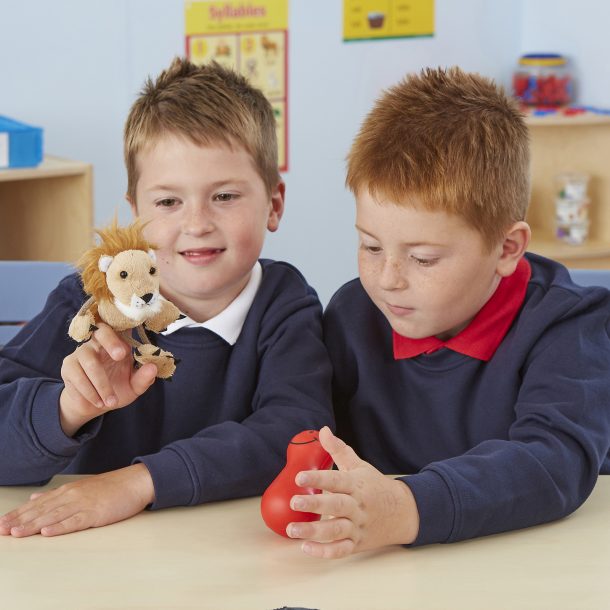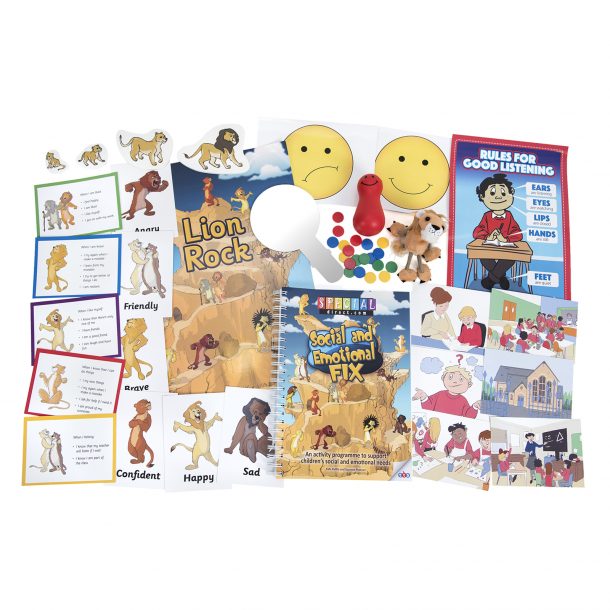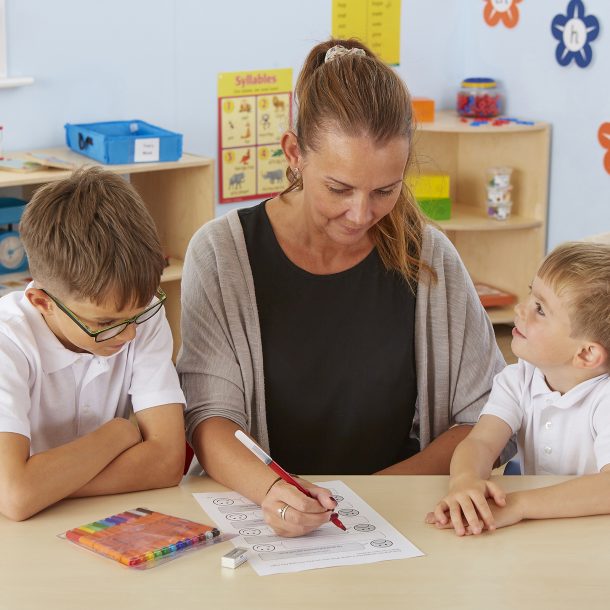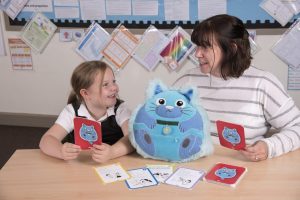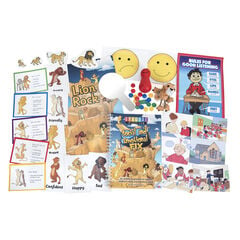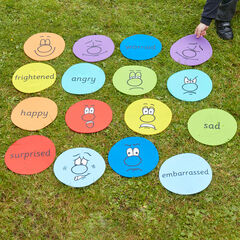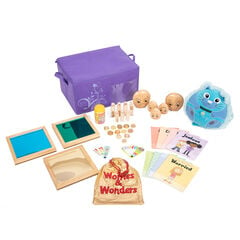Sharing our emotions
It is important to share our own emotions with children. Often as adults, we don’t share our own emotions. Whether this is with children or other adults. We particularly avoid sharing our own emotions with those who we might be trying to support the understanding of emotions!
In society, we often avoid putting our emotions on show. We try to hide these as best we can, eventually becoming overwhelmed in private or when we are around those who are most close to us.
What is this teaching children and other adults who may find emotions difficult to understand? And how are we expecting them to understand emotions when we don’t display any emotions for them to see? Particularly the more negative or unpleasant emotions which can be the most difficult to identify, understand and deal with.
Talk about your emotions together and encourage the sharing of emotions amongst children.
Social and Emotional Intervention Kit
The conscious effort of sharing our emotions provides such valuable learning and development opportunities. The importance of discussing what emotions look like, how they feel and why they occur is all part of sharing them. When supporting others in identifying and understanding emotions, dramatisation helps to bring awareness to emotions, as well as brings significance to our body language and facial expressions.
Demonstrating emotions
Demonstrate emotions yourself through facial expressions and body language.
Demonstrating what emotions look like through facial expressions, actions and sounds will help children and adults to really see this clearly. Often when displaying certain emotions we don’t know what we look like. Seeing our emotions on display helps us to realise how strongly we are feeling, why we are feeling like this and whether it is the right thing to be doing.
Seeing someone else display emotions allows children to reflect on their own emotions.
Is it pleasant to see someone being angry? This is what I look like when I am angry. How does this make those around me feel? What messages is this giving off?
Mirrors and mirroring each other
Mirrors are very effective in demonstrating the more subtle facial expressions and body language reflecting certain emotions. Often children and adults who find it difficult to identify emotions also don’t notice changes in their own body language and facial expressions. These less obvious emotion cues can often be missed in haste or simply missed by those who are not so attuned to emotions.
Mirroring each other can allow the identification of mismatched emotion to body language or facial expression. Some children and adults might display certain body language or facial expressions which do not match their emotion or feeling at that particular moment. They may not be aware of this and might find it difficult to accurately portray their emotions. Discussing this together with the use of a mirror allows them to see what they look like in other people’s eyes, what emotions they are displaying and how this might be an inaccurate representation to what they are feeling inside.
Mirroring each other is very valuable for identifying certain behaviours that one might not usually be aware of. This is even more effective during spontaneous discussions. Some children and adults might not believe that they are displaying a certain behaviour. This may be because they are often unaware of the small emotional cues in their own body language. Mirroring others will allow them to not only identify their own emotions, but what emotions and feelings they are actually portraying, and how accurate this actually is.
Looking at body language and discussing it is extremely valuable for identifying other people’s emotions beyond the very obvious sad, happy and angry emotions. It is also equally as valuable to be aware of the less obvious emotional cues that characterise these most common emotions.
Do keep in mind however that it can be quite uncomfortable to look at yourself in the mirror when you are displaying a negative or an unpleasant emotion. The use of mirrors might be more effective after the child or young adult becomes a little more comfortable with discussing emotions and seeing an adult demonstrate emotions.
Emotional vocabulary
Describe your emotions. When children are learning anything new, they are hearing words, which are just sounds that don’t yet mean anything to them. So talk about what does being sad actually mean? How does it feel? Paint a picture with words for children. Build their emotional vocabulary so they are able to share their own emotions and understand those of others when talking about this.
You might want to look at pictures of different emotions, label them and describe what they look like and what they could feel like. You might even want to give some examples of when those emotions might be felt and seen.
For example: “This picture is showing an angry face. He is not smiling, it looks like his smile is upside down. His eyebrows are frowning. When I am angry I can feel my heart start to beat faster, my head gets hot, my face starts to go red and I find it very hard to listen to what other people have to say.
Describing your own emotions allows children and other adults to relate to you. This builds trust as they can see that you understand them because you have experienced similar feelings.
What can emotions look like beyond the body?
“Paint a picture with words”.
You can take this advice literally and become creative with describing emotions.
- You can draw, paint or create a picture of what you think certain feelings might look like. This is perfect for older children and adults who might already have an understanding of emotions but need support identifying them. What different colours would you use for sad, angry and happy? What about more complex emotions? How can we depict those artistically?
- Scribbling to music is also very eye-opening. Collect a selection of songs (preferably without lyrics) and categorise these into different emotions. Play these to the children and adults and get them to scribble to the songs. A piece of music that sounds relaxed might produce curved and flowy scribbles. Whilst a piece of music that sounds angry could be characterised by sharp lines, peaks and troughs.
- Movement to music. The same activity as above but possibly even more valuable and context-rich. Children and adults can display the body language, facial expressions, walking pace and even sound of their voice when acting out a certain emotion. Music will help to bring a more comfortable focus into this activity of ‘acting/moving to the music’. However, after the activity, it is important to point out and discuss the emotions behind the music, and most importantly, the emotions behind the actions and movements.
With thanks to Angelica Celinska for writing this blog. Angelica has 10 years of experience working in the Early Years and Primary sector with a Masters in Early Years Education from the Institute of Education, University College London (UCL).


